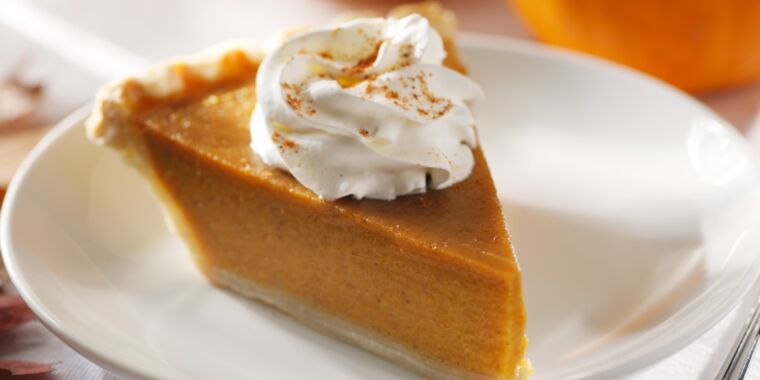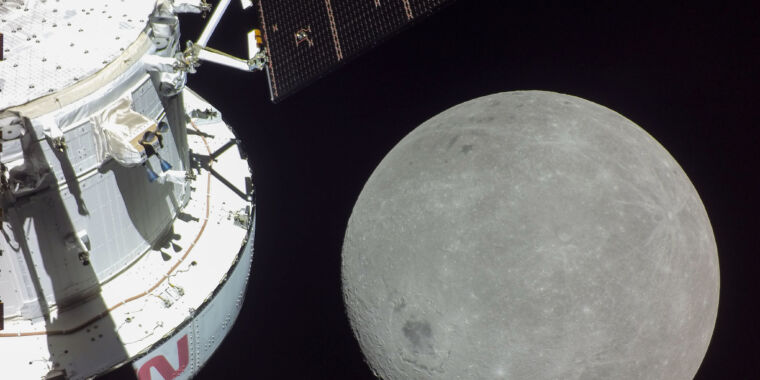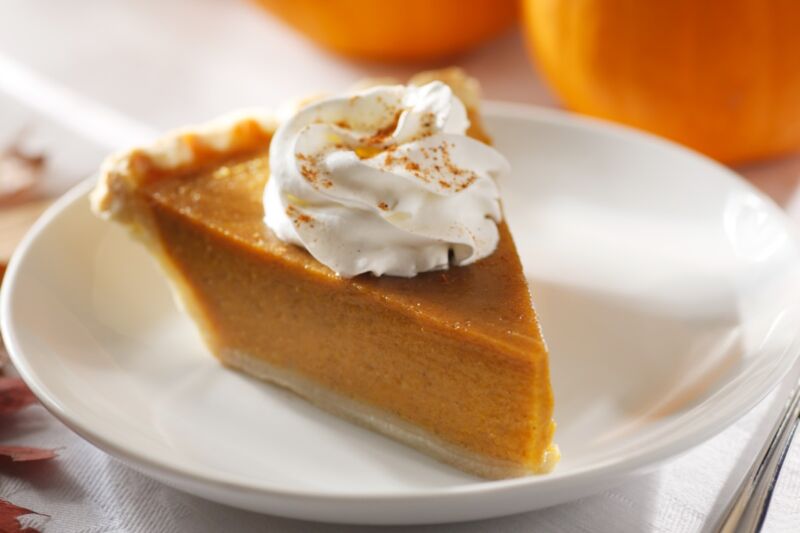
Getty Images
The human love affair with whipped cream dates back to at least the 16th century, and it’s a staple of all our favorite holiday desserts. Is that slice of Thanksgiving pumpkin pie truly the same without a dollop of whipped cream on top? But whipped cream also contains 38 percent saturated fat. That’s one reason it’s so delightfully fluffy and pleasurable to eat, but it’s also not great for our health, and dairy farming is a major source of greenhouse gases. So food scientists at the University of Copenhagen decided to explore possible low-fat, sustainable alternatives. They successfully created a fat-free prototype based on bacteria, according to a recent paper published in the journal Food Hydrocolloids. Someday, per the authors, the whipped topping on our holiday desserts could be made from beer-brewing residues or plants.
“We usually associate bacteria with something to keep away from food,” said co-author Jens Risbo, a food scientist at the University of Copenhagen. “But here, we base a beloved food product on good bacteria found in nature. This has never been seen before. This is advantageous, both because it is a renewable resource grown in a tank, and because it creates a healthier, less energy-dense, fat-free product.”
Whipped cream is a type of liquid foam, a category that also includes hair styling mousse and shaving cream. Such foams are created by beating air into a liquid formula that contains, among other ingredients, some kind of a surfactant (active surface agent)—a collection of complex molecules that link together to stiffen the resulting froth into a substantial foam. The surfactant—usually fats or proteins in edible foams, or chemical additives in shaving cream or styling mousse—keeps surface tension from collapsing bubbles by strengthening the thin liquid film walls that separate them. Cream, with its high-fat content, serves as the surfactant in whipped cream.
In 1948, a clothing salesman turned entrepreneur named Aaron (“Bunny”) Lapin figured out how to deliver whipped cream from a can and introduced the world to Reddi-Wip. Gas is mixed in with the liquid formula and packaged under pressure in the aerosol can. When the valve is opened, the mixture is propelled from the can by nitrous oxide (laughing gas), and the gas expands rapidly to create a foam. In non-dairy varieties of Reddi-Wip, the cream is replaced by vegetable oil, which has an even higher fat content, along with an array of synthetic additives (polysorbate 60, sorbitan monostearates, sodium stearoyl-2, lactylate, xanthan gum, and lecithin).
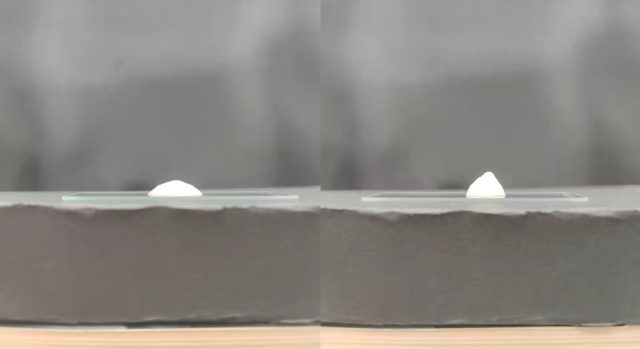
Xiaoyi Jiang et al., 2022
It’s no easy feat to come up with a tasty-but-healthy alternative to one of our favorite treats. “The most difficult aspect of developing an alternative food is getting the texture right,” said Risbo. “Whipped cream undergoes a unique transformation that occurs in a complex system where a high saturated fat content makes it possible to whip the cream stiff. So, how do we create an alternative where we avoid the high fat content, while still achieving the right consistency? This is where we need to think innovatively.”
Risbo and his colleagues only used four ingredients in their experiments: water, edible lactic acid bacteria, a little bit of milk protein, and a thickening agent. There are many kinds of lactic acid bacteria—the kind used by the food industry as a yogurt culture and to preserve cold cuts—and they are plentiful in nature, found in plants and in human/animal mucus membranes and digestive tracts. They also turn out to be ideal building blocks for foods and are roughly the same size as the fat globules in heavy whipping cream.
The Danish team made both soft and stiffer versions of their prototype whipped cream using two different varieties of bacteria: Lactobacillus delbrueckii subs. lactis (LBD) and Lactobacillus crispatus (LBC). The LBC strain is more hydrophobic, producing a cream that is stiffer and retains liquid better than the concoction produced with LBD, which is hydrophilic.
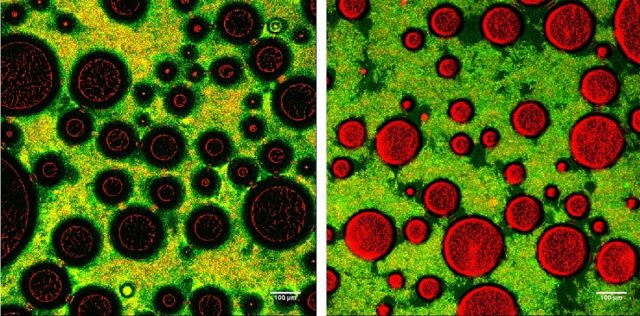
Xiaoyi Jiang et al., 2022
These experiments were primarily to demonstrate proof of concept, and the resulting foams were evaluated primarily for texture and desirable foamy characteristics—not for taste. So we’re not likely to see canisters of “Lacti-Wip” on store shelves any time soon. But the experiments did provide valuable insight into how best to create a non-dairy whipped cream alternative that has a similar food structure.
“We’ve shown that bacteria can be used to create the right structure,” said Risbo. “Now that we understand the context and have learned which surface properties are important, it opens up the possibility of using many other things from nature. This could be yeast residue from brewing, or perhaps small building blocks that we extract from plants. This would make the product very sustainable.”
DOI: Food Hydrocolloids, 2022. 10.1016/j.foodhyd.2022.108137 (About DOIs).

